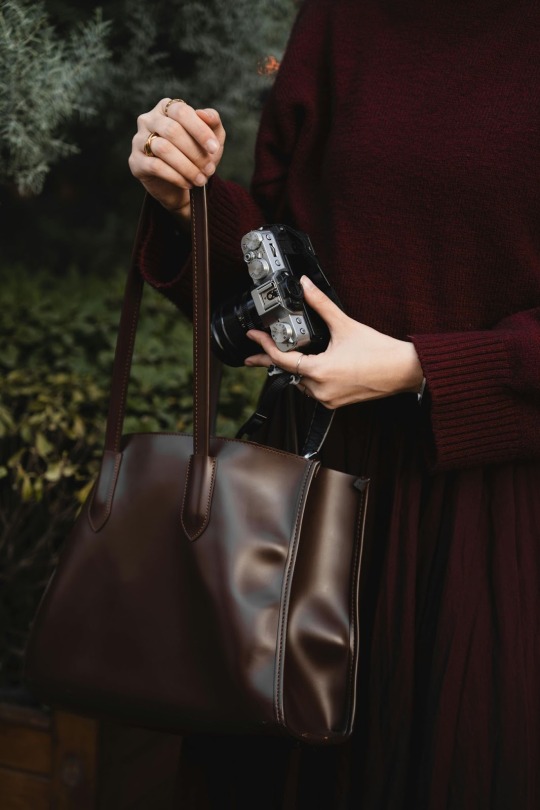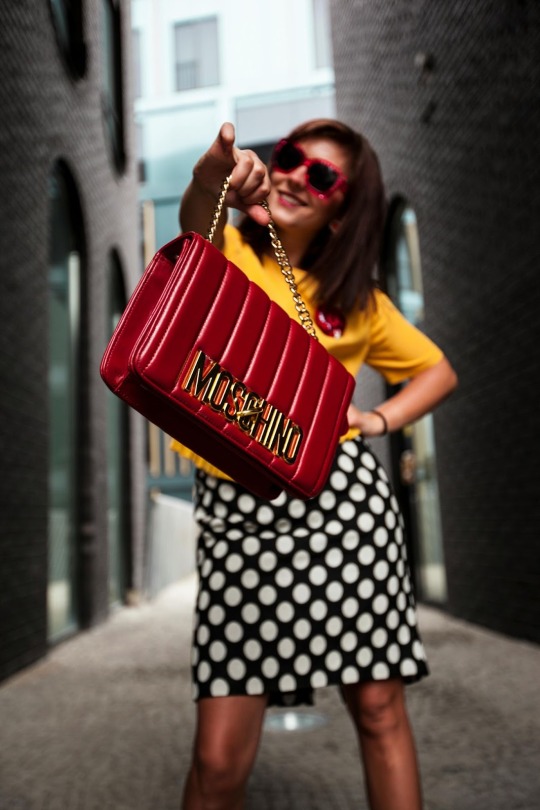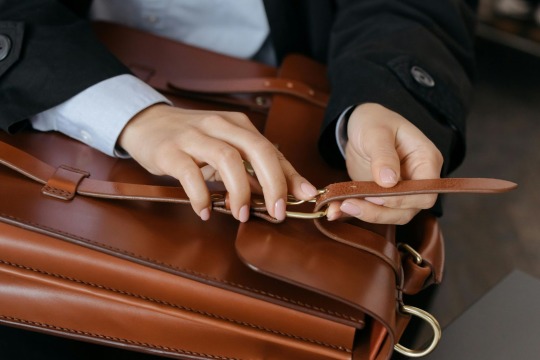Don't wanna be here? Send us removal request.
Text
The History of Bags: From Ancient Pouches to Modern Handbags
Bags have evolved significantly over the centuries, transforming from simple functional pouches into luxurious fashion accessories. Their journey through time reflects the changing needs and desires of society, from ancient civilizations to the present day. Today, bags are not just tools for carrying items—they are essential parts of personal style and status. Let’s dive into the fascinating history of bags and how they’ve become the iconic fashion pieces we recognize today.
Ancient Beginnings: Simple Pouches
The history of bags dates back to prehistoric times when early humans needed a way to carry essential items such as food, tools, and weapons. The first bags were simple pouches made from animal skins or woven fibers, primarily used for practical purposes. These pouches were tied around the waist or slung over the shoulder to allow easy access to the items inside. At this stage, bags were not viewed as fashion items—they were strictly functional, designed to help early humans survive and carry necessary resources.

Ancient Civilizations: A Touch of Luxury
As civilizations advanced, so did the design and purpose of bags. In ancient Egypt, bags were used to carry personal belongings such as jewelry, cosmetics, and money. They were often made from luxurious materials like leather and linen and decorated with intricate designs, signifying that bags were beginning to serve both practical and decorative functions.

The Medieval Era: Decorative and Symbolic
During the Middle Ages, bags began to be more decorative and closely linked to fashion. Bags were worn on belts or attached to clothing, often designed with luxurious materials such as velvet, silk, and embroidered fabrics. The wealthy commissioned finely crafted bags that showcased their social status.
Bags became highly decorative items, often adorned with beadwork, gold thread, and intricate designs. They were no longer just about carrying personal items but were a way for the elite to display their wealth and taste. These bags served not just a functional role but also a symbolic one, marking the wearer’s position in society.

The Industrial Revolution: Mass Production and Accessibility
The Industrial Revolution in the 18th and 19th centuries introduced mass production methods that made bags more affordable and accessible to a larger portion of the population. New materials like canvas, cotton, and leather were used in bag production, making bags both practical and durable.
During this time, the structure of bags began to change, with the design becoming more focused on everyday use rather than luxury or status. Women, in particular, began to carry “reticles”—small, often embroidered bags designed to hold personal items like handkerchiefs, coins, and keys. The reticule was a pivotal development in the evolution of the handbag, as it marked the beginning of bags becoming daily essentials.
The 20th Century: Luxury and Iconic Designs
The 20th century brought about a shift in how bags were viewed. No longer just tools for carrying things, bags became highly coveted fashion items. Luxury brands like Louis Vuitton, Chanel, and Hermes played a central role in this shift. These brands began producing bags that combined exceptional craftsmanship with stylish designs, making bags symbols of elegance, wealth, and sophistication.
The iconic Hermes Birkin bag, introduced in the 1980s, epitomized the luxury handbag. Its exclusivity, paired with its high price tag, made it a symbol of status among celebrities and socialites. Likewise, the Louis Vuitton Speedy and Chanel 2.55 became widely recognized as symbols of high fashion. These bags weren’t just practical—they were aspirational items that represented refinement and taste.
In the late 20th and early 21st centuries, the rise of “it bags” further cemented handbags as status symbols. Brands started creating limited-edition designs, and bags became even more coveted, often associated with high-profile celebrities and influencers. A bag was no longer just an accessory—it became an investment, a symbol of luxury and exclusivity.
Luxury Bags Today: Tradition Meets Innovation
Today, bags continue to be an essential part of personal style. Luxury handbags remain highly sought after, with iconic brands continuing to innovate while staying true to their roots. Designers like Gucci, Prada, and Fendi continue to create bags that combine timeless elegance with contemporary style. In addition to traditional materials like leather and canvas, bags now incorporate innovative designs and experimental materials, ensuring they remain at the forefront of fashion.
In Kerala, the best luxury bag store in Kerala has become a destination for those seeking high-quality handbags. These stores offer both international luxury brands and locally crafted bags, blending traditional craftsmanship with modern design. Whether you're searching for a classic designer piece or a unique, locally made creation, Kerala’s luxury bag stores provide a wide variety of options that cater to diverse tastes and preferences.

Conclusion
The history of bags is a reflection of how fashion and society have evolved. From humble beginnings as utilitarian pouches to becoming symbols of wealth, luxury, and style, bags have undergone a remarkable transformation. Today, luxury bags are more than just accessories—they are expressions of personal taste and social status. As fashion continues to evolve, bags will undoubtedly remain a key part of the fashion industry, combining function with style in ways that are both innovative and timeless. For those looking to add a touch of luxury to their wardrobe, the best luxury bag store in Kerala offers an extensive selection, showcasing both traditional craftsmanship and modern luxury.
1 note
·
View note